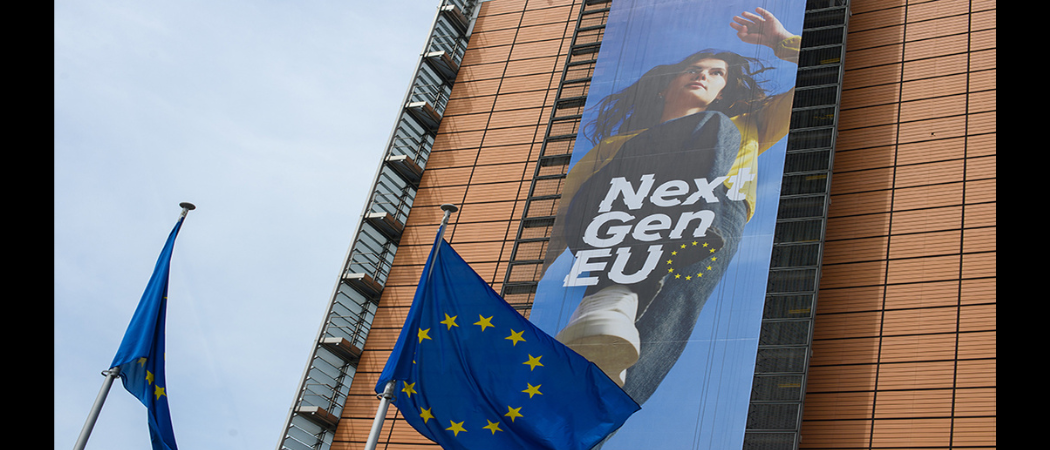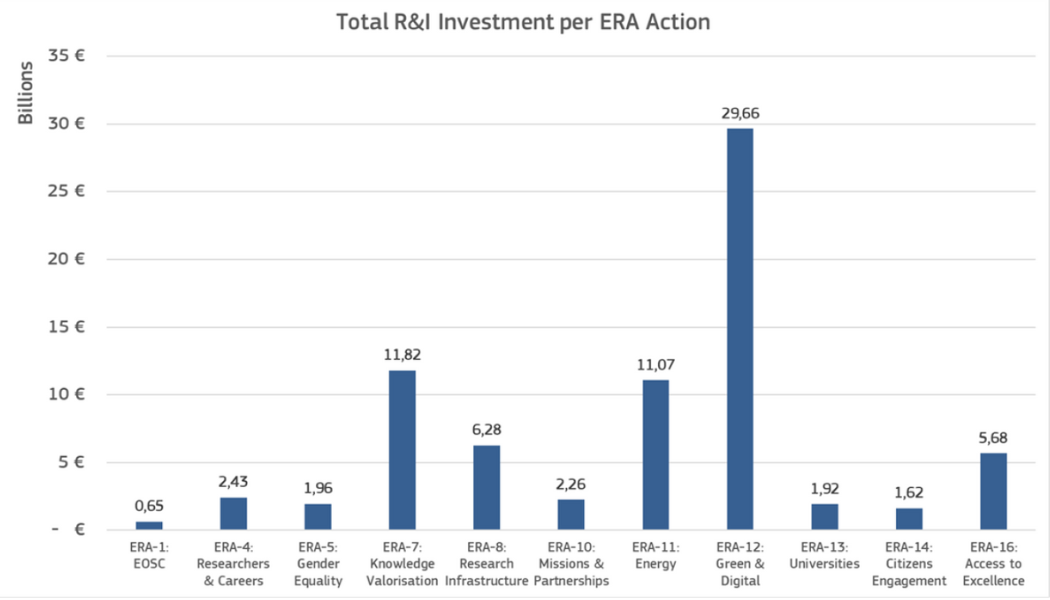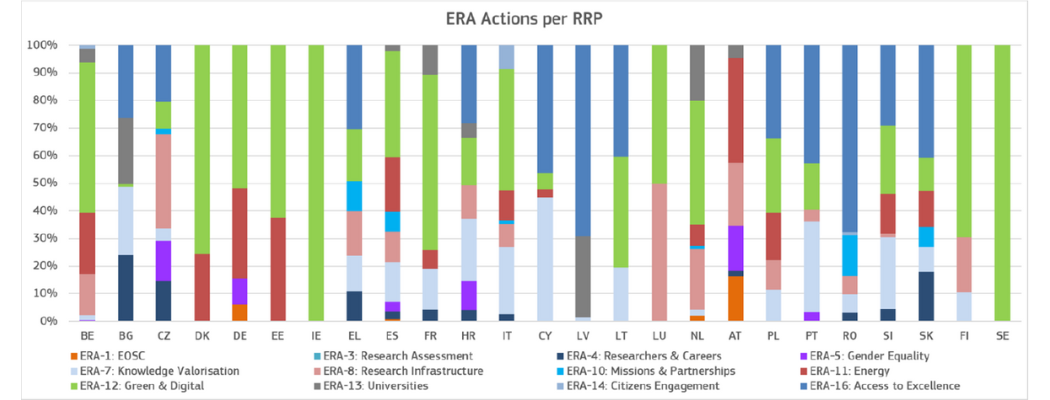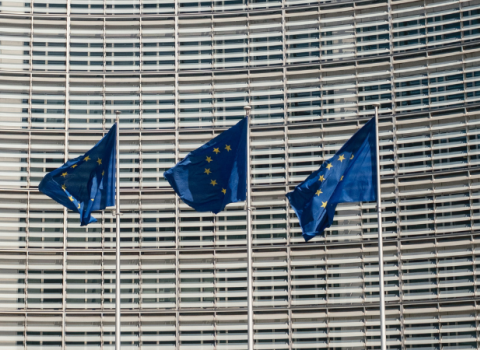A new analysis by the European Commission shows which ERA actions member states are funding from the EU’s post-COVID package

The Recovery and Resilience Facility (RRF) is a temporary instrument and part of NextGenerationEU, the EU’s plan to emerge stronger from the COVID-19 pandemic. Photo: European Union
EU member states plan to spend a combined €47.4 billion of the post-COVID recovery fund on research and innovation projects that promote the development of the European Research Area (ERA), according to a new Commission report.
The majority of this, some €29.66 billion, is linked to ERA action 12 on accelerating Europe’s green and digital sectors through the development of low carbon technologies for energy-intensive industries.
The Recovery and Resilience Facility (RRF) is the €723 billion temporary EU fund designed to help member states recover from the COVID-19 pandemic. A significant part of this is earmarked for investment in research and development, enabling countries to either directly or indirectly promote the concept, revived in 2020, of a borderless, single market for research, researchers and knowledge.
The report describes how the member states are using RRF funds in areas such as green energy research, research infrastructures and technology commercialisation. The table below shows the total investment from RRF funds going towards various ERA actions, with some investments contributing to furthering multiple actions.

Twenty-two member states plan to invest RRF money in areas that will further ERA action 12, which looks to create stronger links between research and industrial policies, to improve technology transfer to industry and better mobilise public and private investments for green and digital technologies.
Only a few countries are using RRF to further ERA actions linked to the open science platform, the European Open Science Cloud, or for furthering citizen engagement in science.
Spain is using its RRF budget on the most ERA actions, contributing to nine, while Ireland and Sweden have a focused approach with their RRF funds only being used in action 12, as shown in the table below.

Impact of ERA
The Commission’s evaluation is the first since ERA was reinvigorated and will serve as a baseline for future assessments. It highlights several achievements, including the creation of a group to improve how research assessment is carried out, called the Coalition for Advancing Research Assessment, and the recent Council conclusions endorsing a joint framework for improving working conditions of researchers in Europe.
It also lauds the ERA Forum, the group responsible for ensuring ERA targets are met, for bringing together member states, countries associated to Horizon Europe, research stakeholders and the European Commission, “to turn the new vision for the European Research Area into reality.”
The report highlights some challenges, for example the disparities in how committed different member states are to achieving ERA objectives, particularly in areas such as knowledge management and on synergies with education.
The varying levels of commitment to ERA by member states has previously been highlighted to Science|Business by stakeholders involved in the ERA Forum. Mattias Björnmalm, secretary general of CESAER, previously criticised the way that ERA has a “very strong focus on a voluntary, if-you-feel-like-it type of approach.” He says this is “deeply problematic, given the formation of ERA is a legal obligation.
Another issue highlighted by Stephane Berghmans, director for research and innovation at the European University Association, is that ERA’s objectives are often unknown or not considered on a national level in the EU.
Work has started on the 2025 – 2027 policy agenda for the ERA, with current actions being reviewed and new actions being put forward for consideration.
Editor’s note: This article has been corrected. It originally said €75.35 billion from the recovery fund would go to ERA actions. This was corrected to €47.4 billion on November 30.





 A unique international forum for public research organisations and companies to connect their external engagement with strategic interests around their R&D system.
A unique international forum for public research organisations and companies to connect their external engagement with strategic interests around their R&D system.